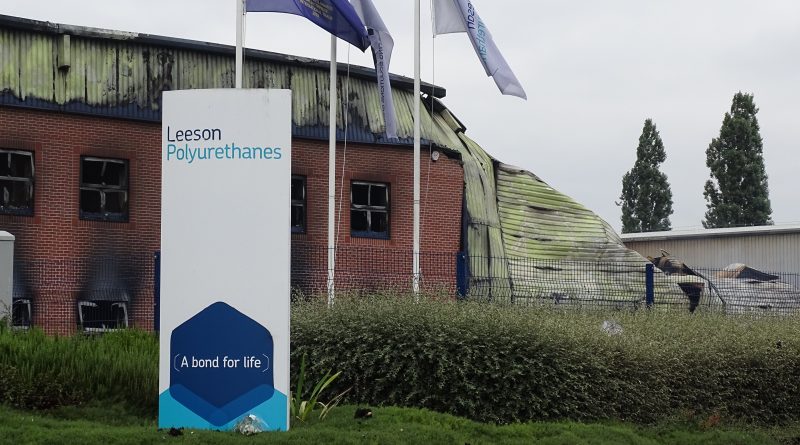Fire crews called to two major industrial fires
Fire crews called to two major industrial fires
Fire crews in the Midlands responded to two devastating industrial fires in late summer. The first at a factory in Leamington Spa caused major disruption and tragically the loss of a worker, while the other in Kidderminster resulted in school closures at the start of term. In both fire events, the buildings were completely destroyed, with neither having the benefit of an automatic sprinkler system.
The major blaze at Leeson Polyurethanes in Leamington Spa on August 27th took firefighters 24 hours to get under control, resulted in homes being evacuated with residents reporting chemical smells and explosions. A huge plume of thick black acrid smoke could be seen across the West Midlands with Public Health England warning that particles, soot and debris could be irritants. Tragically, a worker at the facility was unaccounted for and presumed dead.
Less than two weeks later, more than a dozen schools were forced to close in the first full week of the new school term due to a major fire in Kidderminster. The blaze in Park Street on September 8th broke out in an industrial unit and then spread to other businesses on the estate. At its height, 100 firefighters and 20 appliances from Hereford and Worcester Fire and Rescue Service were tackling the blaze which caused local evacuations and road closures. The fire started in a building owned by Betts Metals, which then spread to adjacent units including a mail fulfilment centre and a tyre centre.
Under current building regulations guidance, the businesses that suffered the devastating fires were not subject to any guidance for sprinklers. People are sometimes confused by this as they see the consequences of the fire and the claims of meeting current regulations and wonder how this can be. The fire service faced fire situations in these cases where they could only act to contain the fire. Surely buildings that are this completely damaged in a fire have fire loads within them that require forms of active fire protection such as sprinklers to limit a potential fire?
Acting quickly to quell the spread of fire when it is first detected aids fire safety, limits damage and minimises impacts. Sprinklers have been shown to be effective to contain, control or extinguish fires in 99% of cases when caused to operate1.
These systems enhance fire safety in buildings and help businesses to be resilient to fire incidents because they control or extinguish a blaze before the fire and rescue service arrive. The impacted business can be operational within hours, avoiding the economic and social costs.
1Efficiency and Effectiveness of Sprinkler Systems in the United Kingdom: An Analysis from Fire Service Data – Optimal Economics May 2017
Images Credit: @FirePhotographer05
For more information about the BSA visit the www.business-sprinkler-alliance.org

